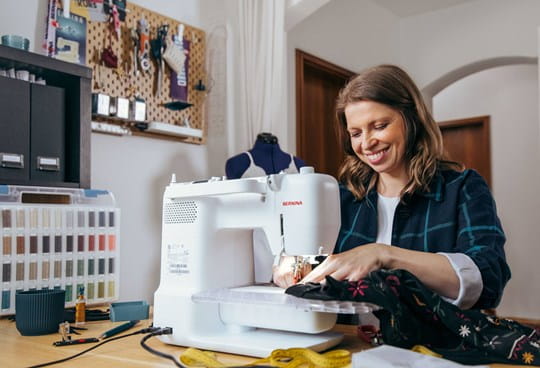Introduction
Embroidery digitizing is the magic that transforms beautiful artwork into flawless stitches. Among the various file formats, DST (Data Stitch Tajima) is the industry standard, widely used in commercial embroidery machines. But creating a perfect DST file isn’t just about converting an image—it’s an art that requires precision, creativity, and technical know-how. Whether you’re a hobbyist or a professional, mastering DST digitizing ensures your designs stitch out smoothly every time. In this guide, we’ll break down the process, share expert tips, and help you avoid common pitfalls.
Understanding DST Files
What Is a DST File?
A DST file is a digital embroidery format used by Tajima and most industrial embroidery machines. It contains stitch data—needle directions, thread colors, and sequencing—that tells the machine exactly how to recreate your design.
Why DST Matters
-
Machine Compatibility: Most embroidery machines recognize DST files.
-
Industry Standard: Professional embroiderers and manufacturers rely on DST for consistency.
-
Efficiency: Optimized stitch paths reduce thread breaks and production time.
The Digitizing Process: Step by Step
1. Start with High-Quality Artwork
A clean, high-resolution image makes digitizing easier. Avoid overly complex designs with tiny details—they may not translate well into stitches.
2. Choose the Right Digitizing Software
Popular options include:
-
Wilcom EmbroideryStudio
-
Hatch Embroidery
-
Pulse Embroidery
-
Brother PE-Design
3. Set Up Your Design Parameters
-
Fabric Type: Different materials (cotton, denim, stretch fabric) require different stitch settings.
-
Hoop Size: Ensure your design fits within the machine’s maximum embroidery area.
-
Stitch Types: Use satin stitches for text, fill stitches for large areas, and running stitches for outlines.
4. Trace and Convert to Stitches
-
Manually trace the design or use auto-digitizing tools (though manual often yields better results).
-
Adjust stitch density—too dense can cause puckering; too sparse may look uneven.
5. Assign Thread Colors and Sequence
-
Group similar colors together to minimize thread changes.
-
Optimize the stitch path to reduce jumps and trims.
6. Test and Refine
-
Run a test stitch-out on similar fabric.
-
Check for thread breaks, gaps, or misaligned stitches.
-
Adjust tension, pull compensation, and underlay as needed.
Common DST Digitizing Mistakes (And How to Fix Them)
1. Poor Underlay
Issue: Skipping underlay leads to unstable stitches.
Fix: Always add an underlay—zigzag for stability or edge run for precise outlines.
2. Incorrect Stitch Density
Issue: Too many stitches cause fabric distortion; too few look patchy.
Fix: Adjust density based on fabric—lighter fabrics need lower density.
3. Ignoring Pull Compensation
Issue: Stitches pull inward, distorting shapes.
Fix: Increase pull compensation in curved or satin stitch areas.
4. Overlapping Stitches
Issue: Layers of stitches create bulk and thread breaks.
Fix: Use proper layering order and trim overlaps in software.
5. Not Accounting for Fabric Stretch
Issue: Designs warp on stretchy fabrics.
Fix: Use floating stitches or stabilizers to prevent distortion.
Advanced Tips for Professional-Quality DST Files
1. Use Manual Digitizing for Complex Designs
Auto-digitizing is quick but often lacks precision. Manually plotting stitches ensures cleaner edges and better detail.
2. Minimize Jumps and Trims
Excessive jumps slow production and waste thread. Optimize the stitch path to reduce unnecessary movements.
3. Experiment with Stitch Angles
Changing fill stitch angles (e.g., 45° vs. 90°) affects texture and durability.
4. Keep an Eye on Thread Tension
Digitizing software simulates tension, but real-world tests help fine-tune settings.
5. Save Multiple Versions
Adjust designs for different fabrics—what works on denim may not work on fleece.
Troubleshooting DST File Issues
Problem: Thread Breaks Frequently
Solution:
-
Check stitch density.
-
Ensure proper needle size and thread weight.
-
Verify machine tension settings.
Problem: Design Looks Pixelated or Blurry
Solution:
-
Use vector-based artwork (SVG, AI) instead of raster images (JPEG, PNG).
-
Increase input resolution before digitizing.
Problem: Fabric Puckering
Solution:
-
Reduce stitch density.
-
Use stabilizer backing.
-
Adjust hoop tension.
Conclusion
Mastering DST digitizing takes practice, but the results are worth it. By understanding stitch types, optimizing thread paths, and testing thoroughly, you’ll create flawless embroidery designs every time. Remember—great digitizing is a mix of technical skill and artistic intuition.
Start with simple designs, refine your technique, and soon, you’ll turn any artwork into perfectly stitched reality. Happy digitizing!

